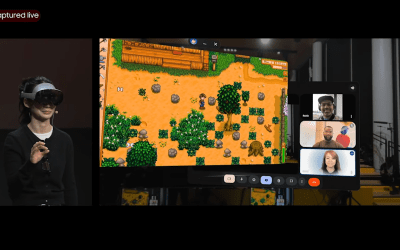From changing traffic lights to transforming farms and diagnosing patients remotely, AIOT is reshaping India’s digital future with smart, connected, and intelligent technology at every turn.
In a world increasingly defined by interconnectedness and digital transformation, the symbiotic relationship between artificial intelligence (AI) and the Internet of Things (IoT) has emerged as a transformative force, giving birth to the phenomenon known as AIOT. This fusion holds a promise, reshaping industries, amplifying efficiencies, and enhancing our everyday lives.
AIOT, or Artificial Intelligence of Things, empowers devices to gather, analyse, and act upon data intelligently, fostering autonomous decision-making and adaptive behaviour.
AIOT as a complete spectacle
Intelligent AloT systems can process massive records, videos, and data streams from systems and sensors throughout an urban centre to detect issues such as illegal parking, road accidents, and changing traffic lights.
Today, several companies are offering unique platforms tailored to the diverse needs of AIOT. Google’s Cloud IoT Core integrates with its robust AI services, empowering businesses to analyse IoT data at scale. Microsoft Azure IoT Suite provides end-to-end solutions with AI capabilities, enabling predictive maintenance and anomaly detection. IBM’s Watson IoT Platform leverages AI to extract insights from IoT data for informed decision-making. Amazon Web Services (AWS) offers IoT Core with AI-powered analytics, enhancing device management and security. NVIDIA’s Metropolis platform focuses on AI-driven video analytics for smart cities and industries.
The characteristics that stand out
- Data intelligence: AIOT systems leverage advanced algorithms to derive actionable insights from massive datasets, enabling predictive analytics and personalised experiences.
- Autonomy: Devices equipped with AIOT capabilities possess the autonomy to interpret and respond to real-time data, reducing human intervention and optimising processes.
- Adaptability: AIOT ecosystems continually learn and adapt to evolving environments, refining their functionalities and performance over time.
- Interconnectivity: Seamless connectivity between devices, facilitated by loT protocols, fosters synergy and collaboration within AIOT networks.
What are the advantages…
- Enhanced efficiency: AIOT streamlines operations, minimises downtime, and optimises resource utilisation, driving efficiency gains across industries.
- Predictive maintenance: By analysing sensor data in real-time, AIOT enables predictive maintenance, preempting equipment failures and minimising costly disruptions.
- Personalised experiences: AIOT delivers personalised services and recommendations based on individual preferences and behavioural patterns, enriching user experiences.
- Cost savings: Automation and optimisation achieved through AIOT lead to significant cost savings, from reduced energy consumption to streamlined logistics.
The cons to watch out for…
- Security concerns: The interconnected nature of AIOT systems exposes them to cybersecurity threats, necessitating robust measures to safeguard sensitive data and infrastructure.
- Complexity: Implementing and managing AIOT deployments requires specialised expertise and infrastructure, posing challenges for organisations with limited resources.
- Privacy issues: The proliferation of interconnected devices raises concerns about data privacy and surveillance, necessitating transparent policies and regulatory frameworks.
- Dependency on connectivity: AlOT functionalities rely heavily on network connectivity, making them susceptible to disruptions and latency issues in remote or unstable environments.
The areas of application
- Smart cities: AIOT enhances urban infrastructure management, from traffic control and waste management to public safety and energy optimisation.
- Healthcare: In healthcare, AIOT enables remote patient monitoring, predictive diagnosis, and personalised treatment regimens, revolutionising the delivery of medical services.
- Manufacturing: AIOT drives Industry 4.0 initiatives, enabling smart factories with autonomous machinery, predictive maintenance, and real-time inventory management.
- Agriculture: In agriculture, AIOT facilitates precision farming techniques, optimising irrigation, crop monitoring, and pest control to maximise yields sustainably.
Scenario In India
India stands at the cusp of a digital revolution fueled by AIOT technologies. From smart infrastructure projects in Cities like Jaipur and Pune to innovative applications in agriculture and healthcare, Indian industries are increasingly embracing AIOT to drive productivity and inclusivity.
For example, air quality sensors could help in managing pollution levels, while traffic sensors could aid in reducing congestion by providing real-time traffic updates and optimising traffic signal timings. Additionally, waste management sensors could optimise garbage collection routes, reducing costs and environmental impact. However, challenges such as infrastructure gaps, skill shortages, and regulatory hurdles must be addressed to unlock its full potential in India.
Challenges ahead
Infrastructure constraints: Inadequate network infrastructure and connectivity gaps hinder the widespread adoption of AIOT technologies, particularly in rural and remote areas.
Skills shortage: The shortage of skilled professionals proficient in AI, IoT, and data analytics poses a significant barrier to AIOT implementation and innovation. As such, AloT may require specific knowledge and skills.
Regulatory frameworks: The growing number of devices connected through IoT increases the risk of cyberattacks and security breaches. The evolving regulatory landscape surrounding data privacy, cybersecurity, and AI ethics requires clear guidelines and standards to ensure responsible AIOT deployments.
Interoperability issues: Ensuring interoperability and compatibility between diverse AIOT devices and platforms remains a challenge, necessitating industry-wide collaboration and standardisation efforts.
Lastly, the convergence of AI and IoT heralds a new era of innovation and opportunity. While AIOT holds immense promise, its successful realisation depends upon addressing the inherent challenges and encouraging collaboration across sectors. With concerted efforts and strategic investments, AIOT has the potential to redefine the future, forging a more connected, intelligent, and sustainable world.
Reference: techtarget.com
Authored By: Vinayak Ramachandra Adkoli. The author holds a BE degree in Industrial Production and has been a lecturer in three different polytechnics for ten years. He is also a freelance writer and cartoonist.









